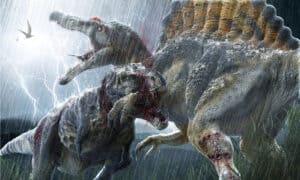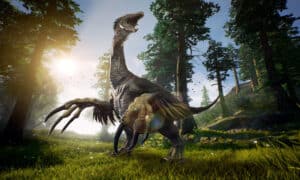Learning about dinosaurs and other prehistoric creatures is fascinating. The thought that the place you currently live was once home to giant creatures roaming freely and going about their business is even more exciting. The United States is one of the few countries with abundant dinosaur fossils. This means at some point several million years ago, these intriguing creatures were once abundant in the prehistoric forests, plains, and waterways of the country. So which of these fascinating creatures made their home in New Hampshire? Dinosaur enthusiasts will probably be disappointed to discover that there are no records of dinosaurs that lived in New Hampshire.
That’s not to say they didn’t live here at all. Just that their remains were probably not preserved well enough for us to find them. So there’s no way to tell which dinosaurs lived in New Hampshire and which ones did not. This post details all you need to know about dinosaurs and other prehistoric animals that lived in New Hampshire and where to find them.
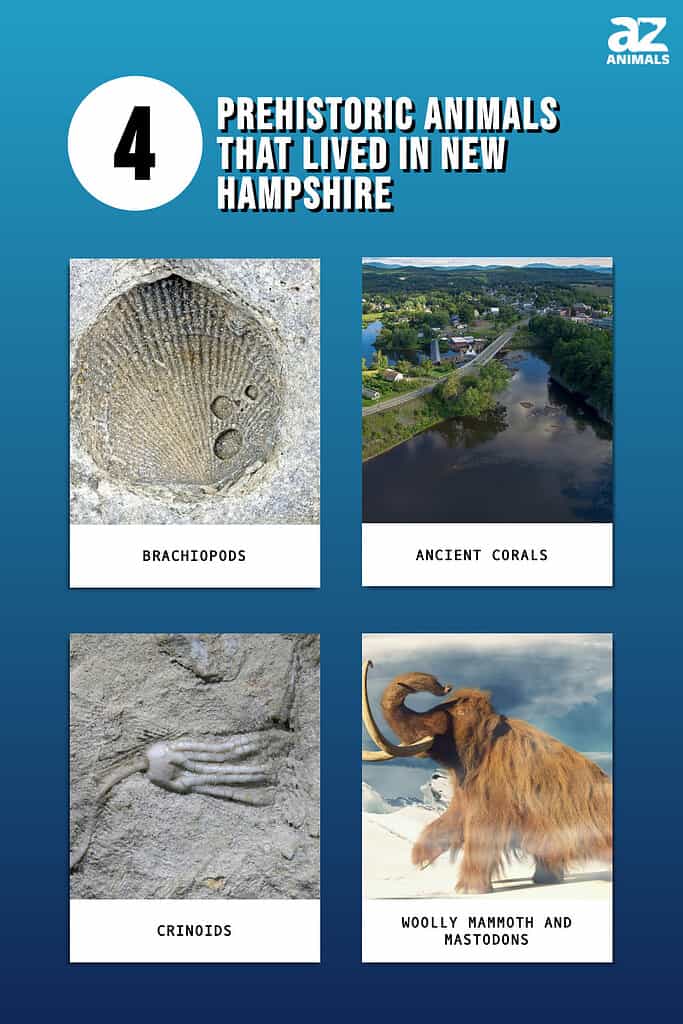
Did Dinosaurs Live in New Hampshire?
California is the state with the highest number of dinosaur fossils ever found, with a total of about 1,988 fossils, according to official records. In contrast, New Hampshire has zero dinosaur fossils found so far.
Interestingly, this does not mean dinosaurs did not live in New Hampshire. Even if they did live in the state, the geologic condition makes it virtually impossible for them to be preserved.
Dinosaurs lived millions of years ago. The last of them died off during the Cretaceous, about 60 million years ago. The remains of animals that have lived so long ago can be preserved for us to study if certain conditions are met. For starters, you need sedimentary rock formations for fossils to be preserved. The remains also have to be deposited in an arid environment.
Sadly, the geology of New Hampshire does meet any of these conditions. The state’s nickname is the Granite State because it sits on granite, a type of igneous rock that is formed from cooling lava. This type of rock cannot preserve fossils.
The rocks in New Hampshire are also not the right age for them to preserve dinosaur bones. The dinosaurs went extinct around the Late Cretaceous (about 65 million years ago). During this time, New Hampshire was underwater. Thus, the few sedimentary units in this region only appeared after the dinosaurs had disappeared. That’s strike two against finding dinosaurs in New Hampshire. Finally, we can also blame glacial erosion for the lack of fossil records in the state.
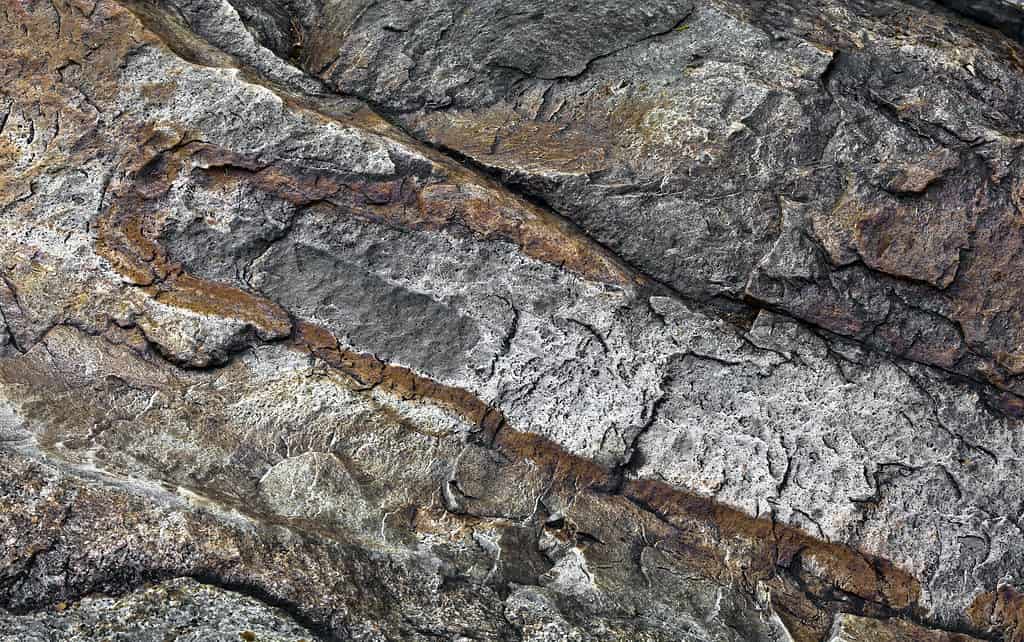
New Hampshire sits on granite, a type of igneous rock formed from cooling lava that cannot preserve fossils.
©John A. Anderson/Shutterstock.com
Prehistoric Animals Apart From Dinosaurs That Lived in New Hampshire
For geologic reasons, New Hampshire has no record of the Mesozoic Era fossils. This period, 252 to 65 million years ago, is commonly referred to as the “age of dinosaurs.” Despite the low preservation of fossils in the state, people discovered few remains of other prehistoric animals. Most of the recovered fossils belonged to marine invertebrates, such as brachiopods and corals, but megafaunas, such as woolly mammoths and mastodons, also exist.
Brachiopods
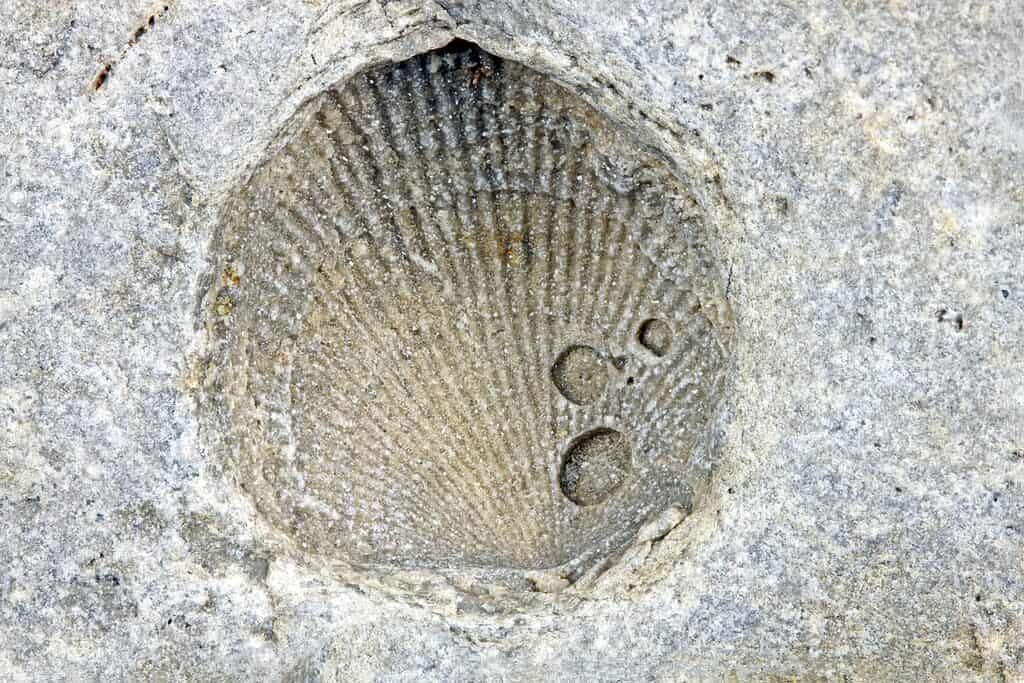
Brachiopods are among the oldest prehistoric animals still living in New Hampshire, with fossils that date back to about 400 million years ago.
©HodagMedia/Shutterstock.com
Animals that belong to the phylum Brachiopoda are called brachiopods. They are small-sized bivalve mollusks. Scientists have classified the phylum into about 100 living genera and over 5,000 fossil genera. The shelled mollusks are among the oldest prehistoric animals that are still living in New Hampshire, with fossils that date back to about 400 million years ago.
The bivalved creatures were particularly abundant in New Hampshire during the Late Paleozoic Era (419 to 252 million years ago). Their population drastically dropped during a major extinction event that occurred some 250 million years ago. Despite this catastrophic event, brachiopods persisted and are still living today.
Brachiopod remains are identified by groove-like depressions on rock bodies made by their shells. Ancient remains of these tiny creatures can be found in the Fitch Formation, Mormon Hill, and a site on the Tip Top Farm about 3.5 miles away from Littleton.
Ancient Corals
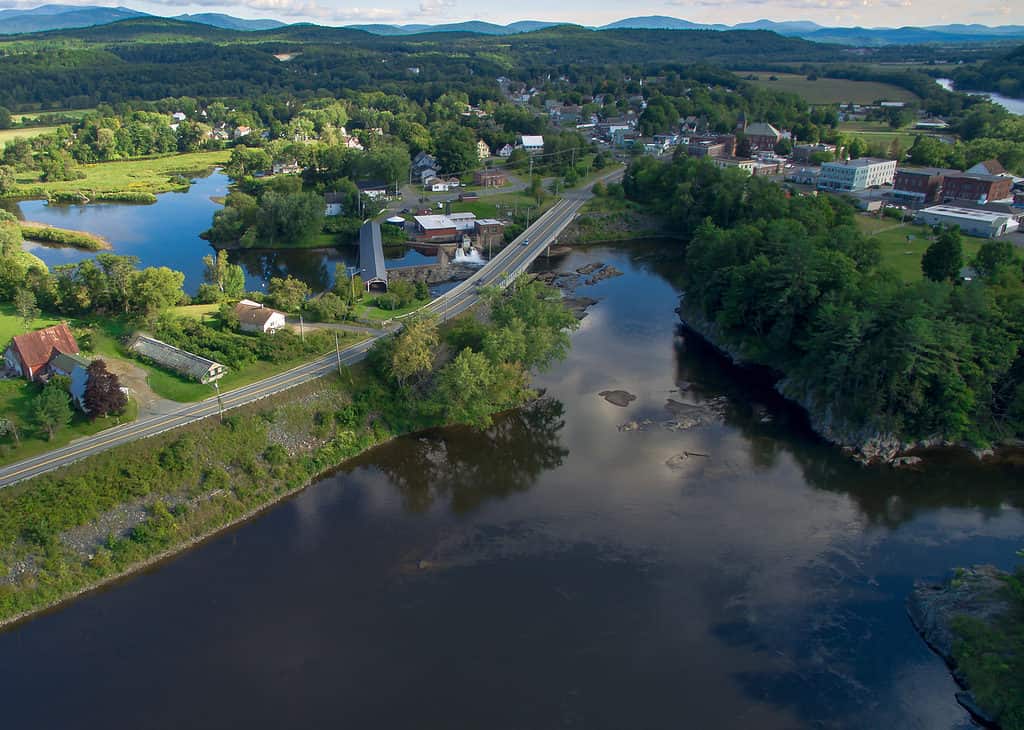
Fossils of ancient chain corals are still present in the marble of the Ammonoosuc River.
©Josh Conover/Shutterstock.com
Corals are small marine invertebrates that live in colonies. Unlike the modern species that have bodies made from aragonite material, the prehistoric species that existed in New Hampshire were made up of calcite (calcium carbonate). The marine invertebrates came into existence 535 million years ago and greatly flourished in New England between 443 and 420 million years ago. However, the Permian-Triassic extinction event that occurred 250 million years ago caused a brief pause in the history of their existence.
Corals are still great reef builders today, and people still mistakenly regard them as plants. There have been several discoveries of the preserved remains of the ancient marine animal in New Hampshire. Fossils of ancient chain corals are still present in the marble of the Ammonoosuc River. You can also find their fossils in various sites of the Fitch Formation.
Crinoids
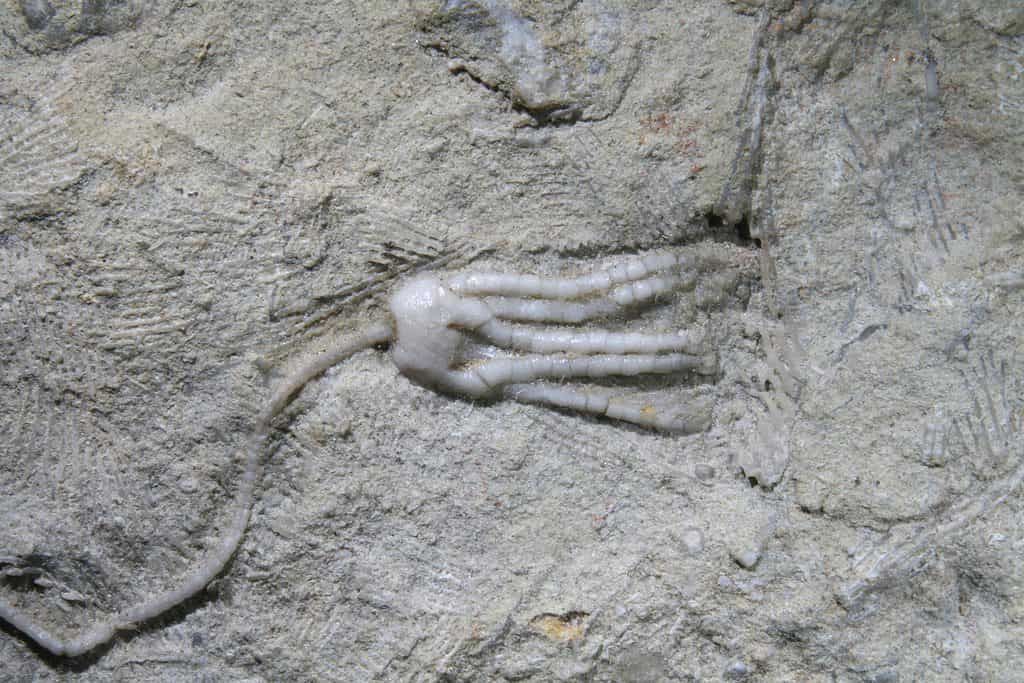
Early crinoid fossils are still in New Hampshire’s Fitch Formation.
©Michael LaMonica/Shutterstock.com
These animals belong to the phylum Echinodermata (the same taxonomic category as starfish, sea urchins, and sea cucumbers). Crinoids are marine invertebrates, and they stay attached to the sea floor. In appearance, crinoids look like starfish with stems in an upside-down position. They look a lot like flowers with their feathery arms sprayed out.
Early crinoid fossils are still in the Fitch Formation. Columnal crinoids can be seen in Franconia, along the Ammonoosuc River a few miles westwards of Littleton, and in the marble located on the eastern bank of the river.
Woolly Mammoth and Mastodons
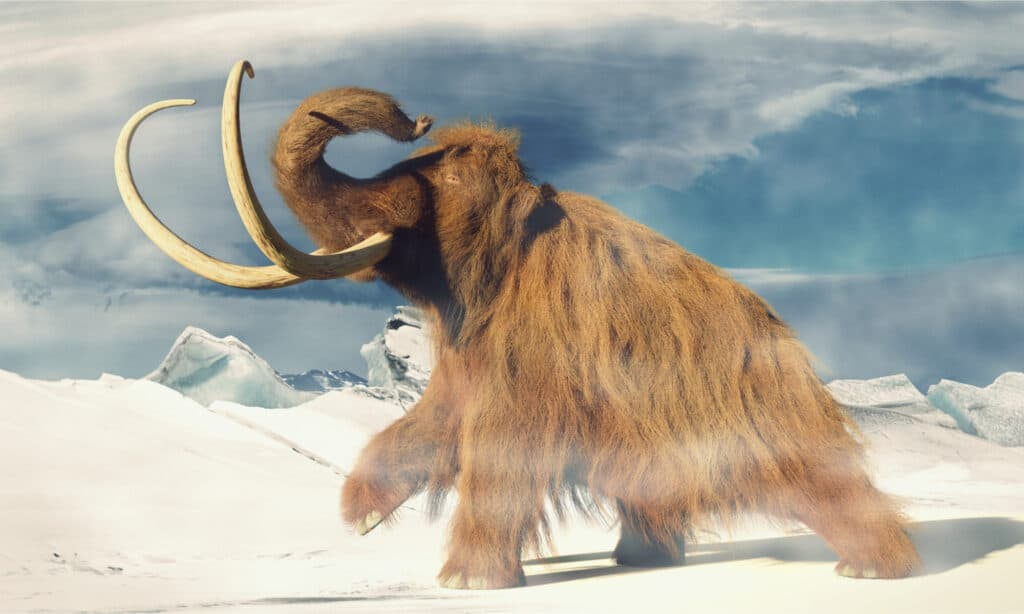
A few fossils of the woolly mammoth have been found in New Hampshire.
©Dotted Yeti/Shutterstock.com
The largest animal fossils found in New Hampshire belong to the mammoths and mastodons. Both groups of mammals are in the order Proboscidea, the same order as modern elephants. Mammoths lived in the cold tundra environment of Europe, Asia, and North America about 300,000 years ago. The last recognized group of these species died out in 1650 B.C.
Only very few fossils of these big animals have been found in New Hampshire. Unlike fossils of the smaller animals, there is no exact site to find the remains of mammoths and mastodons. Most of the discoveries made so far were accidental finds by people on fishing trips.
In 2013, Captain Mike Anderson and Kelsi, his daughter, found a fossilized mammalian tooth near the Isles of Shoals while fishing. The pair were also lucky enough to discover another fossil that belonged to a mastodon a few months later.
Something even more intriguing happened in 2014. Professor Fred Prince recovered a woolly mammoth tooth from the Upper Pemigewasset Valley river bed. The valley is located right in the middle of New Hampshire’s white mountains. The professor reported that he had found something similar a decade earlier but couldn’t figure out what it was at that time. Thinking it was junk, he tossed it back into the water. When he discovered how valuable what he had disposed of was, he went back in search of it.
Conclusion
Due to the unique geology of New Hampshire, fossil preservation is unlikely. So far, no dinosaur has been found in this location, and the chances of finding one in the future are slim. It is still possible to find remains of brachiopods, bryozoans, trilobites, and other marine creatures that lived millions of years ago in this location. We also have evidence that large animals like woolly mammoths and mastodons lived in the state. Although only fragmentary fossils of these animals have been found so far, there’s a good chance we’ll discover better-preserved fossils in the future.
The photo featured at the top of this post is © Liliya Butenko/Shutterstock.com
Sources
- Stacker, Available here: https://stacker.com/new-hampshire/new-hampshire-has-no-dinosaur-fossils-see-which-states-have-most
- Granite Geek, Available here: https://granitegeek.concordmonitor.com/2021/01/06/state-dinosaur-state-fossil-n-h-geology-makes-both-unlikely
- Wikipedia, Available here: https://en.wikipedia.org/wiki/Paleontology_in_New_Hampshire
- Concord Monitor, Available here: https://www.concordmonitor.com/mammoth-ice-age-nh-new-hampshire-dartmouth-39203410
- National Geographic, Available here: https://kids.nationalgeographic.com/animals/prehistoric/facts/woolly-mammoth
Thank you for reading! Have some feedback for us? Contact the AZ Animals editorial team.




